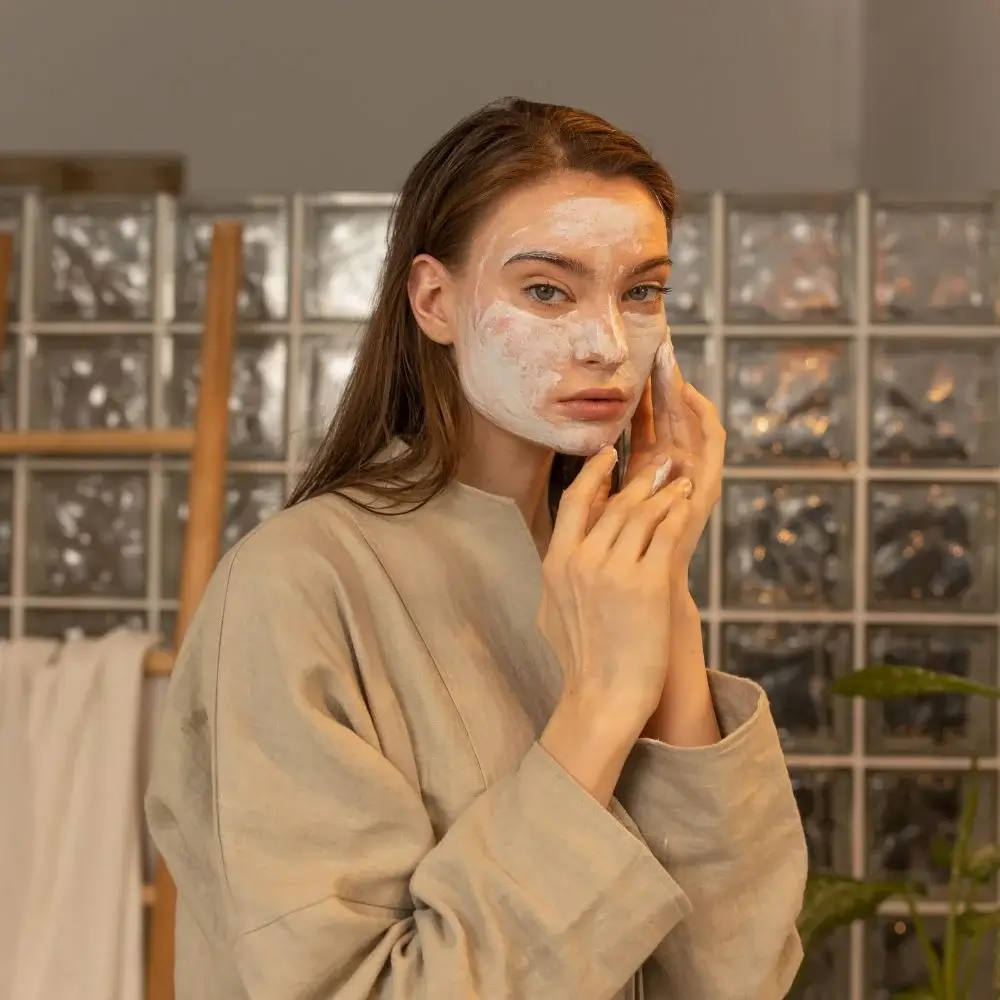Dealing with large pores and acne scars can be a frustrating and stressful experience. You might have tried various skincare products and makeup techniques to hide them, but nothing works perfectly. This is where primer comes in. In this blog post, we will discuss a complete guide to using primer for large pores and acne scars and how it can help you achieve a smooth and flawless complexion.
What is Primer, and How Does it Work?
Before we delve deeper into how primer can help cover large pores and acne scars, let's first understand what primer is and how it works. Simply put, primer is a base coat applied before the foundation (find the best foundation for oily skin here!). It is designed to create a smooth and even canvas for makeup while keeping it in place for longer. Primer comes in different types, including color-correcting, pore-minimizing, and mattifying to address specific skin concerns.
How Primer Helps with Large Pores
Primer can be a powerful ally in hiding large pores. A pore-minimizing primer contains a formula that helps to fill in pores and even out the skin's texture, making them less noticeable. Apply primer before the foundation, and you'll notice that the foundation glides over the skin smoothly, leaving no room for emphasizing pore size.
How Primer Helps with Acne Scars
Acne scars can be challenging to cover, but a primer can help give you a flawless complexion. A color-correcting primer contains tinted pigments designed to balance out your skin tone and hide any discoloration left behind by acne scars. Apply primer before foundation, and you'll notice the scars fade away, leaving you with beautiful and even-toned skin.
How to Apply Primer for Best Results
To get the best results with primer, follow these simple steps: After cleansing and moisturizing your skin, apply the primer evenly to your face using either fingers or a foundation brush. Start from the center of your face and work your way outwards. Allow the primer to dry before applying the foundation. You can also apply both products for a flawless finish with a makeup sponge. Remember not to use too much primer, which can interfere with the foundation's wear time.
Choosing the Right Primer for Your Skin Type
Choosing the suitable primer for your skin type is crucial to achieving the perfect, blemish-free complexion. For large pores and oily skin, use a mattifying primer to keep excess oil at bay. If you have dry or sensitive skin, look for a hydrating primer that can nourish and plump your skin. Choose a color-correcting primer for acne scars that matches your skin tone to even out discoloration.
A primer can be a game-changer in your makeup routine, especially if you have large pores and acne scars. It can help minimize the look of pores and hide any discoloration left behind by acne scars, giving you a smooth and flawless complexion. So, the next time you face these skin concerns, remember to apply a primer before foundation, and you'll see how it transforms your look. Try the tips discussed above, and you'll be on your way to achieving a great makeup look that lasts all day.
Do you struggle with large pores and acne scars? Look no further because we have researched for you and found the best primer for large pores and acne scars to give you a smooth and flawless finish. Our top pick is the ultimate solution for those with tricky skin issues. Not only does it minimize the appearance of pores, but it also helps to diminish the look of acne scars. So why wait? Click on the link and discover your favorite primer that will give you a flawless base for your makeup routine. Say goodbye to the frustration of trying to conceal large pores and acne scars, and hello to perfect-looking skin!
What is the difference between a pore-filling primer and a blurring primer?
Pore-filling and blurring primers are distinct in their approaches to concealing imperfections. Pore-filling primers, such as Benefit POREfessional, have a thicker consistency that fills in pores and acne scars, effectively creating a smooth surface for makeup application. Blurring primers, exemplified by Smashbox Photo Finish, utilize optical diffusers—microscopic particles—to create a visual blurring effect. These particles scatter light, softening the appearance of imperfections without physically filling them. The choice between the two depends on whether you prefer the tactile smoothing achieved through physical filling or the visual blurring effect.

What is the recommended skincare routine to enhance the effects of these primers?
Establish a comprehensive skincare regimen that lays a solid foundation to maximize the effectiveness of primers targeting large pores and acne scars. Begin with a gentle cleanser to remove impurities, followed by a lightweight moisturizer to ensure your skin is adequately hydrated. Incorporate a pore-minimizing serum containing ingredients like niacinamide, a potent pore-reducing agent. This serum acts as a skin-smoothing primer, creating an optimal canvas for the following makeup application (find the most affordable setting spray here!). Complete your pre-makeup routine with broad-spectrum sunscreen, as sun protection prevents further skin damage and scar formation. This multi-step approach enhances the primer's efficacy and supports overall skin health.

What affordable drugstore options for primers targeting large pores and acne scars?
Several noteworthy drugstore primers target large pores and acne scars for those seeking effective solutions without straining their budget. NYX Pore Filler and e.l.f. Poreless Putty Primer standout choices. NYX Pore Filler's silicone-based formula minimizes the appearance of pores, providing a smoother base for makeup application. e.l.f. On the other hand, Poreless Putty Primer is celebrated for its pore-blurring capabilities. These budget-friendly options present accessible ways to improve skin texture and tackle imperfections.

How often should I use a pore-minimizing primer to see visible improvements in skin texture?
Seemingly improving skin texture with pore-minimizing primers requires consistent and dedicated use. Integrate the primer into your daily makeup routine before makeup application. Over a few weeks to a couple of months, you can expect to observe enhanced skin texture and reduced pore visibility. However, it's essential to acknowledge that individual results may vary based on factors like skin type and the specific product you're using. Patience and adherence to a routine are vital to achieving the desired results.

How do blurring primers optically reduce the appearance of pores and scars?
Blurring primers employs a fascinating optical strategy to minimize the appearance of pores and scars. These primers contain microscopic particles, referred to as optical diffusers. Once applied to the skin, these particles scatter and disperse light, creating what's known as a "soft-focus" effect. This effect diffuses the appearance of imperfections, making pores and scars appear less pronounced. It's essential to grasp that blurring primers don't physically fill in imperfections; instead, they provide a visual blurring effect, resulting in a smoother-looking complexion.
Should I opt for a primer with or without added SPF when dealing with acne scars and large pores?
Opting for a separate broad-spectrum sunscreen, in addition to your primer, is highly advisable when addressing acne scars and large pores. Sun protection is pivotal in preventing further skin damage and scar formation. A dedicated SPF product ensures comprehensive protection against harmful UV rays, which can worsen existing skin concerns and hinder progress. By incorporating a primer designed for your specific concerns and a reliable sunscreen, you create a synergistic approach that addresses your skin's needs while prioritizing sun safety.







